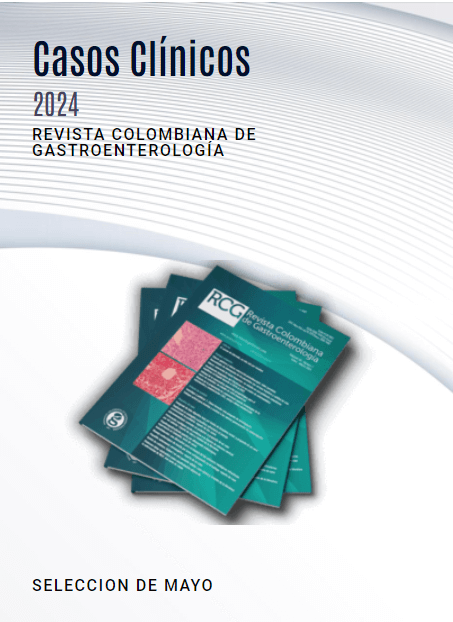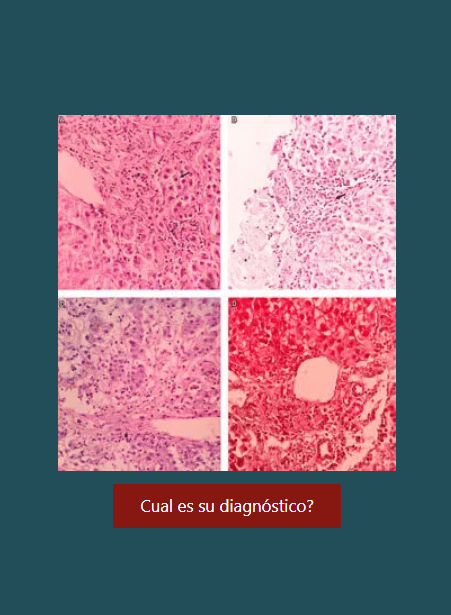Conceptos emergentes: Injuria hepática inducida por productos herbales (HILI). Revisión de tema
DOI:
https://doi.org/10.22516/25007440.355Palabras clave:
Remedios naturales, hepatotoxicidad, estrés oxidativo, homeopatía, HILIResumen
Las terapias consideradas alternativas son un grupo de intervenciones que incluyen el uso de suplementos herbarios y dietéticos bajo la falsa premisa de ofrecer un gran beneficio sobre la salud del paciente sin tener que someterse al riesgo de presentar efectos adversos, ya que se tratan de productos naturales. En Colombia, los remedios naturistas son una práctica común, pero la frecuencia de uso todavía es desconocida. A nivel mundial existe una gran preocupación al respecto, ya que se ha establecido con claridad la asociación existente con injuria hepática debido a su uso, lo cual ha motivado a introducir un concepto nuevo en medicina denominado injuria hepática inducida por productos herbales (HILI).
Descargas
Lenguajes:
esReferencias bibliográficas
Schuppan D, Jia JD, Brinkhaus B, Hahn EG. Herbal products for liver diseases: a therapeutic challenge for the new millennium. Hepatology. 1999;30(4):1099-104. doi: 10.1002/hep.510300437.
Lindstrom A, Ooyen C, Lynch ME, Blumenthal M, Kawa K. Sales of herbal dietary supplements increase by 7.9% in 2013, marking a decade of rising sales: Tumeric supplements climb to top ranking in natural channel. Herbal Gram. 2014;103:52-6.
Tindle HA, Davis RB, Phillips RS, Eisenberg DM. Trends in use of complementary and alternative medicine by US adults: 1997-2002. Altern Ther Health Med. 2005;11(1):42-9.
Larrey D. Hepatotoxicity of herbal remedies. J Hepatol. 1997;26 Suppl 1:47-51.
Eisenberg DM, Kessler RC, Van Rompay MI, Kaptchuk TJ, Wilkey SA, Appel S, et al. Perceptions about complementary therapies relative to conventional therapies among adults who use both: results from a national survey. Ann Intern Med. 2001;135(5):344-51.
Nahin RL, Barnes PM, Stussman BJ. Expenditures on Complementary Health Approaches: United States, 2012. Natl Health Stat Report. 2016;(95):1-11.
Navarro VJ, Barnhart H, Bonkovsky HL, Davern T, Fontana RJ, Grant L, et al. Liver injury from herbals and dietary supplements in the U.S. Drug-Induced Liver Injury Network. Hepatology. 2014;60(4):1399-408. doi: 10.1002/hep.27317.
Bunchorntavakul C, Reddy KR. Review article: herbal and dietary supplement hepatotoxicity. Aliment Pharmacol Ther. 2013;37(1):3-17. doi: 10.1111/apt.12109.
Navarro VJ. Herbal and dietary supplement hepatotoxicity. Semin Liver Dis. 2009;29(4):373-82. doi: 10.1055/s-0029-1240006.
Vega M, Verma M, Beswick D, Bey S, Hossack J, Merriman N, et al. The Incidence of Drug- and Herbal and Dietary Supplement-Induced Liver Injury: Preliminary Findings from Gastroenterologist-Based Surveillance in the Population of the State of Delaware. Drug Saf. 2017;40(9):783-787. doi: 10.1007/s40264-017-0547-9.
Suk KT, Kim DJ, Kim CH, Park SH, Yoon JH, Kim YS, et al. A prospective nationwide study of drug-induced liver injury in Korea. Am J Gastroenterol. 2012;107(9):1380-7. doi: 10.1038/ajg.2012.138.
Cho JH, Oh DS, Hong SH, Ko H, Lee NH, Park SE, et al. A nationwide study of the incidence rate of herb-induced liver injury in Korea. Arch Toxicol. 2017;91(12):4009-15. doi: 10.1007/s00204-017-2007-9.
Björnsson ES, Bergmann OM, Björnsson HK, Kvaran RB, Olafsson S. Incidence, presentation, and outcomes in patients with drug-induced liver injury in the general population of Iceland. Gastroenterology. 2013;144(7):1419-25, 1425.e1-3. doi: 10.1053/j.gastro.2013.02.006.
Medina-Caliz I, Garcia-Cortes M, Gonzalez-Jimenez A, Cabello MR, Robles-Diaz M, Sanabria-Cabrera J, et al. Herbal and Dietary Supplement-Induced Liver Injuries in the Spanish DILI Registry. Clin Gastroenterol Hepatol. 2018;16(9):1495-1502. doi: 10.1016/j.cgh.2017.12.051.
Douros A, Bronder E, Andersohn F, Klimpel A, Kreutz R, Garbe E, et al. Herb-Induced Liver Injury in the Berlin Case-Control Surveillance Study. Int J Mol Sci. 2016;17(1). pii: E114. doi: 10.3390/ijms17010114.
Reuben A, Koch DG, Lee WM; Acute Liver Failure Study Group. Drug-induced acute liver failure: results of a U.S. multicenter, prospective study. Hepatology. 2010;52(6):2065-76. doi: 10.1002/hep.23937.
Bessone F, Hernández N, Sanchez-Ciceron A, Di Pace M, Gualano G, Arrese M, et al. A comparative analysis of the Spanish and Latin-American prospective drug-induced liver injury (DILI) networks. Hepatology. 2015;62(Suppl 1):504.
Tomlinson B, Chan TY, Chan JC, Critchley JA, But PP. Toxicity of complementary therapies: an eastern perspective. J Clin Pharmacol. 2000;40(5):451-6.
Kennedy J. Herb and supplement use in the US adult population. Clin Ther. 2005;27(11):1847-58. doi: 10.1016/j.clinthera.2005.11.004.
Seeff LB, Lindsay KL, Bacon BR, Kresina TF, Hoofnagle JH. Complementary and alternative medicine in chronic liver disease. Hepatology. 2001;34(3):595-603. doi: 10.1053/jhep.2001.27445.
Medina-Caliz I, Gonzalez-Jimenez A, Bessone F, Hernández N, Sánchez A, Di Pace M, et al. Variations in drug-induced liver injury (DILI) between different prospective DILI registries. Clin Ther. 2013;35(8):Se24. doi: 10.1016/j.clinthera.2013.07.057.
Teschke R, Eickhoff A. Herbal hepatotoxicity in traditional and modern medicine: actual key issues and new encouraging steps. Front Pharmacol. 2015;6:72. doi: 10.3389/fphar.2015.00072.
Viganó M, Lampertico P, Colombo M. Acute hepatitis following assumption of a herbal remedy. Eur J Gastroenterol Hepatol. 2008;20(4):364-5. doi: 10.1097/MEG.0b013e3282f2bbe5.
Ifeoma O, Oluwakanyinsola S. Screening of herbal medicines for potential toxicities. Intech Open [internet] 2013 [acceso el 24 de marzo de 2018]. doi: 10.5772/54493. Disponible en: https://www.intechopen.com/books/new-insights-into-toxicity-and-drug-testing/screening-of-herbal-medicines-for-potential-toxicities.
Espinoza EO, Mann MJ, Bleasdell B. Arsenic and mercury in traditional Chinese herbal balls. N Engl J Med. 1995;333(12):803-4. doi: 10.1056/NEJM199509213331217.
Pantano F, Mannocchi G, Marinelli E, Gentili S, Graziano S, Busardò FP, et al. Hepatotoxicity induced by greater celandine (Chelidonium majus L.): a review of the literature. Eur Rev Med Pharmacol Sci. 2017;21(1 Suppl):46-52.
Zhu Y, Niu M, Chen J, Zou ZS, Ma ZJ, Liu SH, et al. Hepatobiliary and pancreatic: Comparison between Chinese herbal medicine and Western medicine-induced liver injury of 1985 patients. J Gastroenterol Hepatol. 2016;31(8):1476-82. doi: 10.1111/jgh.13323.
Amadi CN, Orisakwe OE. Herb-Induced Liver Injuries in Developing Nations: An Update. Toxics. 2018;6(2). pii: E24. doi: 10.3390/toxics6020024.
Frenzel C, Teschke R. Herbal Hepatotoxicity: Clinical Characteristics and Listing Compilation. Int J Mol Sci. 2016;17(5). pii: E588. doi: 10.3390/ijms17050588.
Kwon H, Lee SH, Kim SE, Lee JH, Jee YK, Kang HR, et al. Spontaneously reported hepatic adverse drug events in Korea: multicenter study. J Korean Med Sci. 2012;27(3):268-73. doi: 10.3346/jkms.2012.27.3.268.
Li B, Wang Z, Fang JJ, Xu CY, Chen WX. Evaluation of prognostic markers in severe drug-induced liver disease. World J Gastroenterol. 2007;13(4):628-32.
Chalasani NP, Hayashi PH, Bonkovsky HL, Navarro VJ, Lee WM, Fontana RJ; et al. ACG Clinical Guideline: the diagnosis and management of idiosyncratic drug-induced liver injury. Am J Gastroenterol. 2014;109(7):950-66. doi: 10.1038/ajg.2014.131.
Chinese Medical Association, Xu JM. Cooperative Group of Hepatobiliary Disease of Digestive Disease Branch of Chinese Medical Association: A multicenter survey on hospital inpatients with drug-induced acute liver injury in China. Chin J Dig (Chin). 2007;27:439-42.
Wu XN, You H, Jia JD. Clinical features of drug-induced liver injury: a review of Chinese literature 2003-2007. Chin Hepat (Chin) 2008;13(8):463-6.
Chalasani N, Fontana RJ, Bonkovsky HL, Watkins PB, Davern T, Serrano J, et al. Causes, clinical features, and outcomes from a prospective study of drug-induced liver injury in the United States. Gastroenterology. 2008;135(6):1924-34, 1934.e1-4. doi: 10.1053/j.gastro.2008.09.011.
Koff RS. Herbal hepatotoxicity. Revisiting a dangerous alternative. JAMA. 1995;273(6):502.
Hu YY, Huang F. Chinese herb and drug-induced liver injury. Zhonghua Gan Zang Bing Za Zhi. 2012;20(3):173-5.
Lin G, Wang JY, Li N, Li M, Gao H, Ji Y, et al. Hepatic sinusoidal obstruction syndrome associated with consumption of Gynura segetum. J Hepatol. 2011;54(4):666-73. doi: 10.1016/j.jhep.2010.07.031.
Zhu Y, Li YG, Wang Y, Wang LP, Wang JB, Wang RL, et al. Analysis of Clinical Characteristics in 595 Patients with Herb-induced Liver Injury. Zhongguo Zhong Xi Yi Jie He Za Zhi. 2016;36(1):44-8.
Kales SN, Christophi CA, Saper RB. Hematopoietic toxicity from lead-containing Ayurvedic medications. Med Sci Monit. 2007;13(7):CR295-8.
Strader DB, Seeff LB. Zakim and Boyer hepatology. En: Boyer TD, Wrigth TL, Manns MP (editores). Hepatotoxicity of herbal preparations. Filadelfia: Elsevier; 2006. p. 551-60.
Zimmerman HJ, Ishak KG. General aspects of drug-induced liver disease. Gastroenterol Clin North Am. 1995;24(4):739-57.
Lucena MI, Camargo R, Andrade RJ, Perez-Sanchez CJ, Sanchez De La Cuesta F. Comparison of two clinical scales for causality assessment in hepatotoxicity. Hepatology. 2001;33(1):123-30. doi: 10.1053/jhep.2001.20645.
Chinese Society of Hepatology, CMA. Guidelines for the management of drug-induced liver injury. Lin Chuang Gan Dan Bing Za Zhi. 2015;31(11):1752-69. doi: 10.3969/j.issn.1001-5256.2015.11.002.
Barritt AS 4th, Lee J, Hayashi PH. Detective work in drug-induced liver injury: sometimes it is all about interviewing the right witness. Clin Gastroenterol Hepatol. 2010;8(7):635-7. doi: 10.1016/j.cgh.2010.03.020.
Ernst E. Adulteration of Chinese herbal medicines with synthetic drugs: a systematic review. J Intern Med. 2002;252(2):107-13.
Rochon J, Protiva P, Seeff LB, Fontana RJ, Liangpunsakul S, Watkins PB, et al. Reliability of the Roussel Uclaf Causality Assessment Method for assessing causality in drug-induced liver injury. Hepatology. 2008;48(4):1175-83. doi: 10.1002/hep.22442.
Wang JB, Zhu Y, Bai ZF, Wang FS, Li XH, Xiao XH; et al. Guidelines for the Diagnosis and Management of Herb-Induced Liver Injury. Chin J Integr Med. 2018;24(9):696-706. doi: 10.1007/s11655-018-3000-8.
O’Grady JG, Alexander GJ, Hayllar KM, Williams R. Early indicators of prognosis in fulminant hepatic failure. Gastroenterology. 1989;97(2):439-45.
Björnsson E. Drug-induced liver injury: Hy’s rule revisited. Clin Pharmacol Ther. 2006;79(6):521-8. doi: 10.1016/j.clpt.2006.02.012.
Reuben A. Hy’s law. Hepatology. 2004;39(2):574-8. doi: 10.1002/hep.20081.
Shaw D, Leon C, Kolev S, Murray V. Traditional remedies and food supplements. A 5-year toxicological study (1991-1995). Drug Saf. 1997;17(5):342-56. doi: 10.2165/00002018-199717050-00006.
He TT, Wang JB, Bai ZF, Guo YM, Niu M, Zhu Y, et al. Guidelines for clinical diagnosis and treatment of herb-induced liver injury. Zhongguo Zhong Yao Za Zhi. 2017;42(24):4893-4897. doi: 10.19540/j.cnki.cjcmm.20170919.001.
Neff GW, Reddy KR, Durazo FA, Meyer D, Marrero R, Kaplowitz N. Severe hepatotoxicity associated with the use of weight loss diet supplements containing ma huang or usnic acid. J Hepatol. 2004;41(6):1062-4. doi: 10.1016/j.jhep.2004.06.028.
Woolf GM, Petrovic LM, Rojter SE, Wainwright S, Villamil FG, Katkov WN, et al. Acute hepatitis associated with the Chinese herbal product jin bu huan. Ann Intern Med. 1994;121(10):729-35.
Descargas
Publicado
Cómo citar
Número
Sección
Licencia
Aquellos autores/as que tengan publicaciones con esta revista, aceptan los términos siguientes:
Los autores/as ceden sus derechos de autor y garantizarán a la revista el derecho de primera publicación de su obra, el cuál estará simultáneamente sujeto a la Licencia de reconocimiento de Creative Commons que permite a terceros compartir la obra siempre que se indique su autor y su primera publicación en esta revista.
Los contenidos están protegidos bajo una licencia de Creative Commons Reconocimiento-NoComercial-SinObraDerivada 4.0 Internacional.


| Estadísticas de artículo | |
|---|---|
| Vistas de resúmenes | |
| Vistas de PDF | |
| Descargas de PDF | |
| Vistas de HTML | |
| Otras vistas | |
















